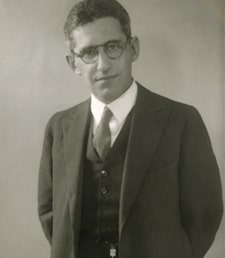Leonard Bloomfield (1887 – 1949) was a linguist who pioneered the development of structural linguistics in the United States during the 1930s and 1940s. He made important contributions to Indo-European linguistics, the description of Austronesian languages, and the description of languages in the Algonquian family. He is also considered to be the father of American distributionalism.
Bloomfield attended Harvard College from 1903 to 1906, and he graduated with a Bachelor’s degree. He earned a graduate degree from the University of Wisconsin and took courses in German and Germanic philology, as well as other Indo-European languages. Eduard Prokosch, a linguistics professor at the University of Wisconsin, convinced Bloomfield to pursue a career in language studies.
In 1908, Bloomfield moved to the University of Chicago to take courses in German and Indo-European philology with Frances A. – completed his doctoral dissertation in Germanic historical linguistics under the supervision of Wood, and graduated in 1909.
He taught at several universities from 1909 to 1927. In 1927, he became a professor at the University of Chicago, and in 1940, he became a professor of linguistics at Yale University. Bloomfield was interested in the details of Indo-European speech sounds and word formation, but he also looked at broader issues related to language science that he wrote about in his work “An Introduction to the Study of Language” (1914). He also worked on a language from one of the Malayo-Polynesian (Austronesian) families, Tagalog. In the 1920s, Bloomfield began his classic work on North American Indian languages. This work was the first of many descriptive and comparative studies of the Algonquian family.
Bloomfield also helped found the Linguistic Society of America. He wrote the lead article for the Society’s inaugural journal, “Language”, and was President of the Society in 1935. He taught at the society’s summer Institute of Linguistics in 1938 and 1940.
In the summer of 1925, Bloomfield worked as an Assistant Ethnologist with the Geological Survey of Canada. He was working on Plains Cree language research, which was arranged by Edward Sapir, the Chief of the Division of Anthropology at the Victoria Museum. In May 1946, he had a stroke that ended his career.


